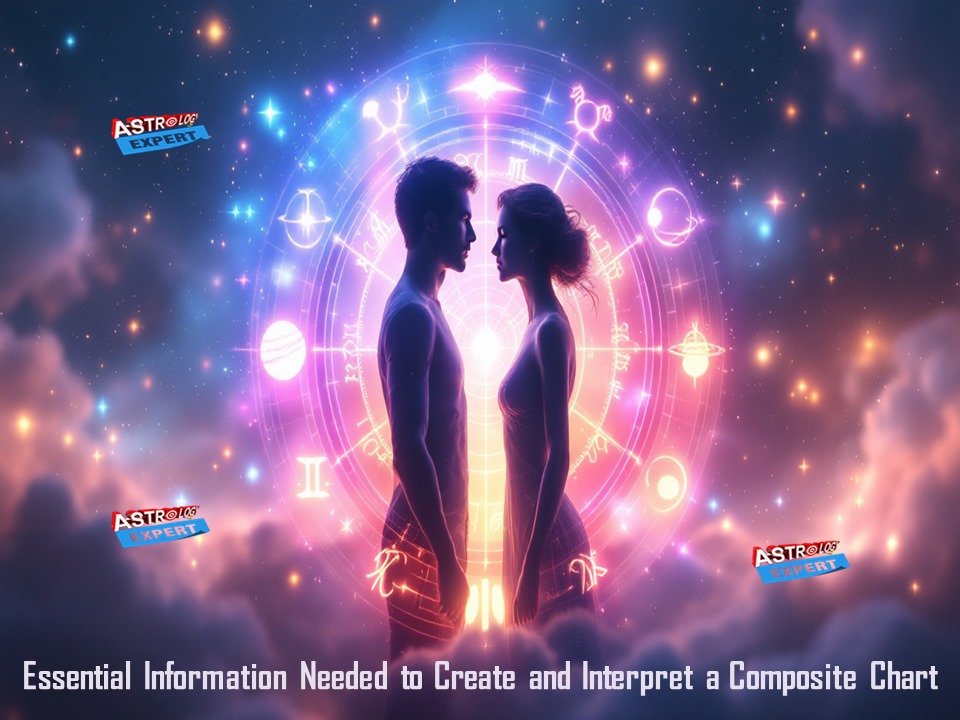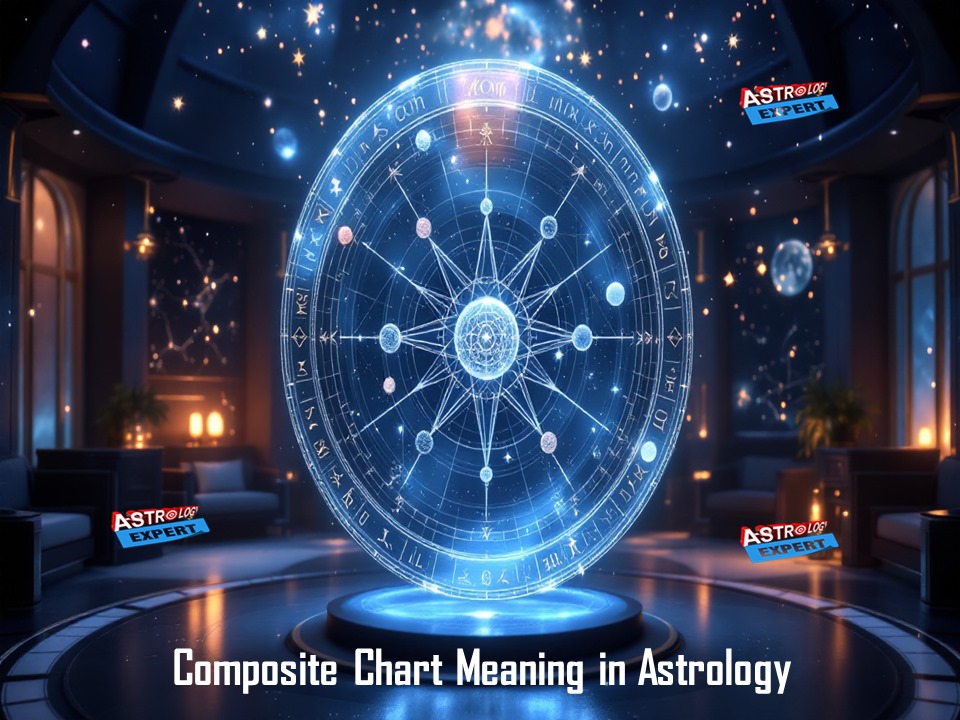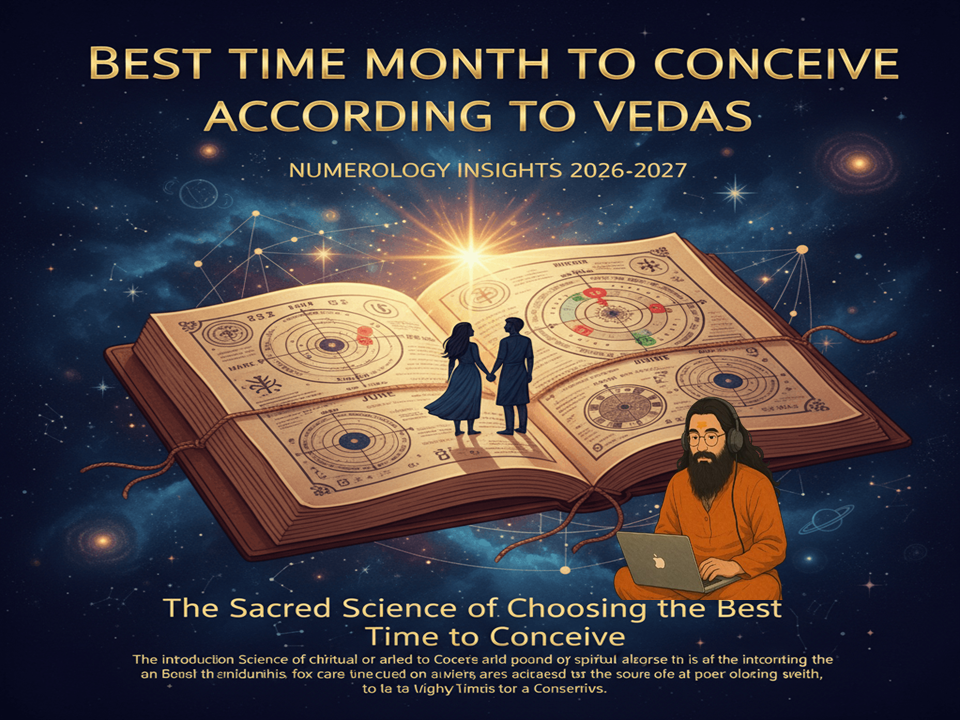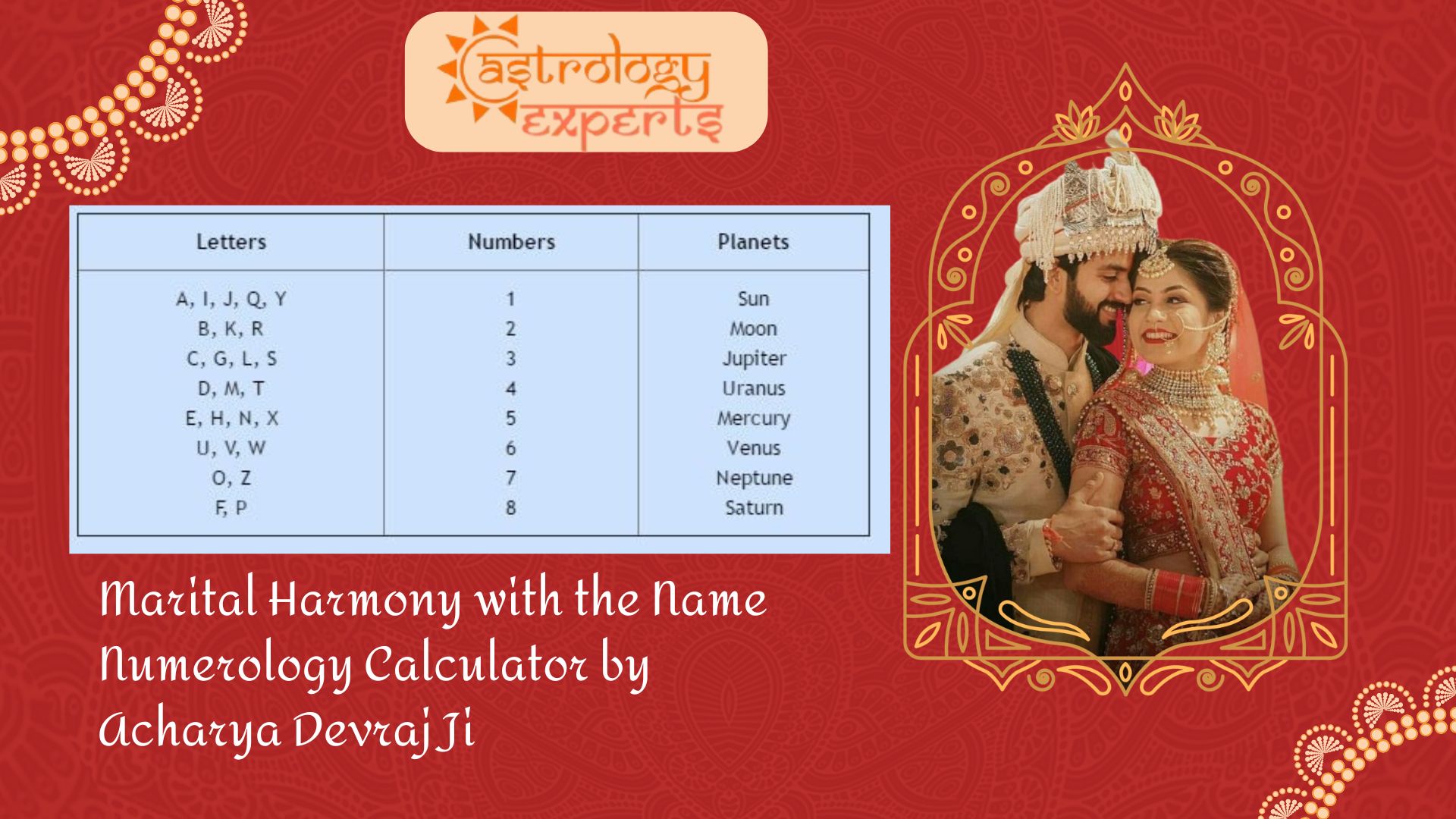Composite Chart Meaning in Astrology: Acharya Devraj Ji Explains Relationship Insights and Real Benefits
A composite chart in astrology explores how two people connect by blending their birth charts into one shared chart. This process finds the midpoints between each person’s planets and creates a single chart that stands for the relationship itself. The composite chart shows the energy between both people and highlights how their bond shapes their experiences together. By looking at this chart, you can see the main themes and patterns that play out in the relationship.
When it comes to guiding people on relationships, Acharya Devraj Ji stands out as one of India’s most respected astrology experts. With nearly two decades of experience, he’s known for clear, honest advice that cuts through confusion. His clients trust him for detailed readings that actually make sense—no cryptic talk or empty promises.
A composite chart shows the “energy” of a relationship itself, created by blending the birth details of two people. Unlike just comparing horoscopes, this chart acts as the relationship’s unique blueprint. It highlights how two people come together, where that connection thrives, and where challenges might show up.
If you want real answers about love, friendship, or partnership, understanding your composite chart is key. In this guide, you’ll learn which details are needed to create one, what matters most in its interpretation, and how it reveals the purpose and future of any bond. This approach helps couples see not just what works, but why—and how to grow stronger together.
What is a Composite Chart in Astrology?
A composite chart is the “birth chart” of your relationship. Instead of looking at just your personal horoscopes, this chart brings both together and creates something entirely new—the chart of your partnership as its own living, breathing presence. You can think of it as the blueprint of your relationship’s personality, showing how you function together, where the strengths bloom, and where you may face rough patches.
Unlike synastry, which compares the two natal charts side by side to see how you interact, the composite chart merges the energies to describe your relationship as a united force. It tells the shared story that’s bigger than just your individual backgrounds.
Building the Composite Chart: The Midpoint Method
Creating a composite chart uses the mathematical midpoints between each of your planets and key points. Here’s what that means in practice:
· For every planet (like the Sun, Moon, Venus, and Mars) and critical angles (such as the Ascendant), find where it falls in both birth charts.
· Calculate the exact midway point between each matching planet or point.
· The result is a new set of planetary positions—unique to this relationship.
You end up with a single chart that isn’t about you or your partner alone, but about the “third energy” that exists only when you’re together. This is why people sometimes call it the relationship’s “child chart” or “combined soul map.”

Composite Chart vs. Synastry: What Makes It Different
While both methods explore compatibility, they answer different questions:
· Synastry: Shows how your traits and patterns affect each other. Think of it as overlaying two maps and looking at every intersection.
· Composite Chart: Crafts a new map, showing the emotional climate, key themes, and main direction of your bond as a couple.
A synastry report might say, “You trigger each other’s ambitions.” The composite chart reveals, “Together, your relationship has a mission of growth and ambition.”
Why the Composite Chart Matters
When you see your composite chart, you’re looking at the heart of your relationship itself—not just a comparison of personalities. It reveals:
· The overall energy signature or “vibe” of the partnership.
· Main challenges and lessons built into your union.
· Natural joys and the places where connection runs deepest.
This perspective is valuable if you want to understand not just why you get along (or clash), but what your relationship is here to do. Whether you’re seeking clarity in love, friendship, or business, reading your composite chart gives you a clear sense of the purpose and story your connection is meant to live out.
Essential Information Needed to Create and Interpret a Composite Chart
Before you can unlock the secrets of any relationship using a composite chart, you need to start with the right raw data. Accurate birth details for both people involved aren’t just helpful—they are non-negotiable. Each piece of this information shapes the chart’s structure, depth, and the reliability of every insight you’ll get about your bond.
The Birth Data You Must Have for Both People
You’ll need the following details for each person to create a trustworthy composite chart:
· Date of Birth
· Exact Time of Birth (including AM or PM)
· Place of Birth (city, state, and country)
Even if one detail is slightly off, the midpoints calculated between both charts can shift, leading to a totally different relationship profile.
Why Accuracy Is Everything
Every degree and minute in a birth chart matters—especially when blending two charts together. Here’s why precision counts:
· Planetary Positions: The composite chart is built by finding the exact midway point between similar planets (like both Suns, both Moons, and so on). An error in time or place throws off the entire map, changing where planets and points like the Ascendant will fall.
· House Cusps: Houses in astrology show life areas impacted by your relationship. Even a half-hour error in birth time can land a planet in the wrong house, completely changing what the composite chart reveals about your love, family, or work-life balance.
· Aspects and Angles: These show harmony or tension points. Get a birth time wrong, and those key relationship dynamics will point in the wrong direction.
In short, every little detail helps fine-tune the entire relationship’s “soul map.”
How Each Detail Impacts the Composite Chart
Think of it as mixing two unique paint colors. If one color is even slightly off, the shade created changes. Here’s a closer look at how each part of your birth data plays a role:
· Date of Birth: Sets the basic location of each planet. If you get this wrong, every planetary midpoint will be skewed.
· Exact Time of Birth: Determines key angles—like the Ascendant and Midheaven—which anchor the houses in your composite chart and affect how the relationship shows up in daily life.
· Place of Birth: This tweaks calculations for planetary positions and house placements, making sure your chart isn’t shifted off by a whole time zone.
The more precise your data, the more specific and valuable your relationship insights will be.
The Bottom Line: Don’t Guess—Get It Right
The composite chart isn’t just data; it’s the foundation for understanding your connection’s big picture. Skipping the details or ballparking birth times means you risk missing the real story. For anyone serious about discovering what truly unites or separates them from another, getting all three details—date, exact time, and place—absolutely correct, for both people, is the only way to go.
With complete and correct information, you’ll have a composite chart that gives genuine clarity, helping you understand your relationship’s unique energy, strengths, and lessons.
Key Features to Analyze in a Composite Chart
A composite chart is your relationship’s personal “blueprint.” Every line and angle in this chart shows a different side of how you and your partner truly come together. For a reading that gets to the heart of your connection, focus on a few primary features—the positions of the composite Sun, Moon, Ascendant, the aspects between planets, and where everything lands in each house. Together, these pieces reveal the deeper themes, strengths, and stress points shaping your partnership’s unique energy.
Planetary Aspects and Relationship Themes
In a composite chart, planetary aspects are like the language your relationship speaks. These angles between planets show how different energies express themselves in your life together.
Key aspects to watch:
· Conjunctions (0°)
When two planets sit together, their energies blend. For example, Sun conjunct Venus in the composite chart is often a sign of warmth, affection, and shared values in the relationship’s core.
· Oppositions (180°)
These bring up push-and-pull dynamics. While they can show strong attraction, they also highlight tensions and the need for balance. A Moon opposite Mars aspect might spark passion but could trigger emotional clashes if not managed well.
· Squares (90°)
Squares represent challenges that demand attention. If you see Venus square Saturn, there may be hurdles around trust, commitment, or affection that need honest work.
· Trines (120°) and Sextiles (60°)
These aspects show areas where your relationship flows with ease. Trines are especially helpful—the kind of spark that makes things feel natural between you. A composite Sun trine Jupiter brings optimism and a sense of shared growth.
· Major patterns
Sometimes, you’ll spot special patterns like a T-square (one planet in tension with two others), Grand Trine (three planets linked in a harmonious triangle), or Yod (two planets sextile, both forming quincunxes to a third). A Grand Trine makes certain life areas easy, but can also make the relationship coast without growth. A T-square is tense but often forces progress.

Why aspects matter:
Each aspect spotlights where you and your partner work as a team, where you clash, and where you can grow together. Harmonious aspects signal comfort and easy connection. Tense ones push you to resolve old habits that keep getting in the way. Analyzing these gives you real insight into your relationship’s strongest qualities, its ongoing lessons, and the deeper narrative you share.
The Role of Composite Houses
The houses in your composite chart pinpoint which areas of life your relationship activates most. Each house represents a specific focus, and the planets clustered there tell where your energy naturally flows.
Here’s how to understand the main houses:
· 1st House (Identity):
Describes how your relationship appears to the world—a couple’s “vibe” or public face.
· 5th House (Romance and Fun):
A loaded 5th house means passion, creativity, and playfulness are front and center.
· 7th House (Partnership):
One of the most important for relationships. Planets here suggest a strong focus on commitment, teamwork, or marriage.
· 8th House (Intimacy and Shared Resources):
Planets in the 8th show deep emotional or financial bonds, and where real transformation may happen between you.
· 11th House (Friendship and Future Goals):
Emphasis here points to shared dreams, community, and long-term aspirations as a team.
· 12th House (Healing and Secrets):
The 12th house is linked to deep healing, the subconscious, or sometimes, things best kept private. Planets here may show themes of sacrifice, hidden strengths, or the need for boundaries.
Interpreting house focus:
Let’s say your composite chart has many planets in the 4th house (home and family). That signals your relationship thrives on emotional security and building a nurturing space. If everything falls in the 10th house (career and reputation), your partnership may shine in public or professional life but need to cultivate private time together.
By understanding which houses are emphasized, you learn what really matters most to your connection and where you’ll experience both the highs and the rough patches.
A quick summary of what to notice:
· Where are most of your composite planets?
· Which houses contain the Sun, Moon, Venus, or Mars?
· Are any houses empty, or are some packed?
Checking these details puts a spotlight on the real “work” your relationship is here to do—and the natural gifts you share.
Analyzing these core features gives you a practical, hands-on guide for understanding any partnership. When you know where your strengths and stressors lie, you can work together to create a relationship that feels authentic, rewarding, and built for the long haul.
Interpreting the Composite Chart: Decoding Relationship Dynamics
Reading a composite chart is like unlocking the “instruction manual” for your relationship. This chart is all about the energy you create together—not just who you are as individuals, but what you become as a team. By exploring planetary placements, aspects, and houses, you start to see the personality of your bond: where you’re strong, where the friction lies, and what truly binds you. Here’s how to make sense of the biggest clues your composite chart lays out.
Strengths and Challenges Revealed
Your composite chart acts as a mirror, spotlighting both the high points and the trouble spots in your partnership. Patterns in this chart can make clear what feels effortless and what demands real attention.
· Harmony and Ease: Look for trines and sextiles between the composite chart’s Sun, Moon, Venus, and Jupiter. These bring comfort, openness, and joy that can’t be forced. When Venus and Moon connect smoothly, affection and care flow easily.
· Recurring Struggles: Squares and oppositions signal lessons and growth areas. A Sun-Saturn square, for example, hints at issues with responsibility, timing, or feeling “stuck” together.
· Areas of Repetition: If certain houses are packed with planets, or challenging aspects repeat, the same arguments or themes may show up throughout the relationship. For instance:
o A cluster in the fourth house could showcase ongoing family or home-related issues.
o Repeated Mars aspects might mean conflict or passion easily boils over.
Key takeaway: Your strengths are where energy flows without effort. Your challenges are the patterns that, unless faced, just keep circling back. Recognizing them helps you shift out of autopilot and do better, together.
Romantic, Sexual, and Emotional Dynamics
The real heart and chemistry of a relationship jump out in the composite chart, especially in how planets like Venus, Mars, and the Moon interact.
· Romantic Vibe: A strong composite Venus in harmony with the Sun or Moon supports sweetness, fun, and a sense of being “in love” together.
· Sexual Chemistry: Mars in the composite chart plays a big role in desire and sexual spark. Its aspects show if attraction comes easy (trines/sextiles) or if tension (squares/oppositions) makes things hot but sometimes challenging.
· Emotional Fulfillment: The composite Moon points to your shared emotional needs and what feels “safe.” If the Moon and Venus get along, nurturing and romance come naturally. Difficult Mars-Moon contacts can mean emotional outbursts or difficulty cooling off after a fight.
· Depth and Intimacy: Planets in the eighth house, or connections with Pluto, often show if your bond is transformative, magnetic, or just plain intense.
Checklist for romantic dynamics:
· Where do Venus and Mars fall in the composite? Are they well-placed or challenged?
· Is the Moon supported by positive aspects? This helps with emotional security.
Key takeaway: The composite chart doesn’t just show if there’s spark—it spells out how that spark turns into lasting warmth (or fizzles out in drama).
Communication and Shared Emotions
How you talk and listen to each other, and how well you “get” each other on an emotional level, is written in the composite positions of Mercury and the Moon, plus their aspects.
· Communication Style: Strong Mercury placements, especially with harmonious aspects to the Sun or Venus, make for easy, friendly banter. Tense aspects, like Mercury square Mars, might spark debates that escalate quickly.
· Shared Mindset: Mercury’s house shows where conversations naturally flow—maybe it’s dreams (11th house), feelings (4th house), or day-to-day life (6th house).
· Emotional Connection: The composite Moon, especially when backed by positive ties to Mercury, means you intuit each other’s moods and needs.
· Potential Blind Spots: Hard aspects between Mercury and Neptune can cloud clarity, leading to misunderstandings, mixed signals, or even keeping secrets.
· Mutual Understanding: Favorable Moon aspects with Venus or Sun ease emotional expression, building trust and comfort over time.
Key takeaway: Open, easy communication and a sense of being understood are seen in how Mercury and the Moon line up. Tough aspects mark places where effort is needed to stay clear and close.
In summary, interpreting your composite chart gives you a map—one that points out the easy roads, the blind curves, and the scenic routes in your relationship. By spotting these signatures, you learn not only what to cherish, but also where you both have space to grow.
Soul-Level and Future Insights: The Deeper Benefits of Composite Chart Reading
A composite chart does more than identify where you click or clash. It’s a map that uncovers life’s deeper reasons for coming together. This chart gives real answers about karmic patterns, spiritual growth, and how your bond is likely to change over time. Looking beyond the day-to-day, it shows the “big story” behind your relationship, what you’re meant to teach each other, and how you’ll grow together. By pairing composite chart insights with synastry (how your individual energies interact), you get a full, honest picture of your connection—past, present, and future.
Karmic and Spiritual Themes: Explore how nodes and key planetary positions indicate the relationship’s soul purpose and spiritual growth areas
Every relationship carries a purpose beyond friendship, romance, or shared goals. The composite chart helps you see if yours is about healing, growth, old karma, or forging new paths. Here’s how:
· Nodes as Guides: The North Node (future growth) and South Node (past lessons) sit in every composite chart, shining a light on your shared destiny. Where the composite North Node falls shows your relationship’s greater mission—what you’re meant to move toward together. The South Node reveals habits and stories you’re carrying from the past, possibly even past lives or family patterns.
· Saturn, Pluto, and Chiron: These planets signal lessons that stick. For example, Saturn in the 7th house might mean heavy commitment, but also tests around trust or responsibility. Pluto often draws out deep transformation or power issues, while Chiron shows where healing can and must happen together.
· Intense Aspects: When you see connections like Venus square Saturn or Moon opposite Pluto, this isn’t just friction—it’s an invitation to work through old wounds or insecurities. Harmonious aspects, like Venus trine Uranus, promote growth and new ways of loving.
· House Placements: Planets in the 4th house bring up family issues, while a packed 12th signals spiritual development, forgiveness, or letting go of past baggage together.
Here are signs your relationship has a strong karmic or spiritual theme:
· Repeated patterns, even when you try to change them
· A “meant to be” feeling, or an uncanny sense of déjà vu
· Events that feel fated, intense beginnings or separations
· Growth that pushes you out of your comfort zone
When you spot these in your composite, you know your bond isn’t here by accident. It’s here to move both of you forward, even if the lessons aren’t always easy. Each challenge is a doorway to growth, healing, and greater wisdom—both together and apart.
Forecasting and Relationship Evolution: Discuss progressions, transits to the composite chart, and predictive insights for future developments
Composite charts tell the bigger story of your connection, but they’re just the foundation. By watching how the planets move over time—using techniques like progressions and transits—you can see critical turning points ahead, spot rocky patches, and make the most of smoother times.
· Transits: When current planets in the sky interact with your composite chart, they light up specific areas of your relationship. For example, when Jupiter crosses your composite Sun, expect greater joy, optimism, or new opportunities as a couple. If Saturn crosses the composite Moon, it can test your emotional strength or bring necessary structure.
· Progressions: Astrologers use this method to track internal changes in your bond, not just what happens outside. Progressed planets in the composite chart highlight subtle shifts—maybe a relationship grows more serious, or you’re suddenly craving more freedom as a couple.
· Timing Major Shifts: Major life events often match up with strong transits to the composite chart: moves, breakups, engagements, reconciliations, or big career shifts that affect how you come together. These patterns don’t dictate outcomes, but they do show when energy is rising or falling.
Benefits of predictive composite astrology include:
· Spotting high and low points in your relationship’s timeline
· Knowing when to take action or give space during tougher cycles
· Getting early signs of new phases—romance, challenges, career changes
· Seeing how you, together, respond to life’s pressures over time
Integrating composite forecasts with synastry readings makes this even clearer. You see not only how you’ll each evolve individually, but also how your partnership will handle whatever the future throws your way.
Understanding both the soul-level purpose and future trajectory of your relationship delivers confidence, honesty, and a sense of meaning to your journey together. The composite chart doesn’t just outline what is—it also shows what’s possible next.
How the Composite Chart Reveals Your Relationship’s True Energy
The composite chart is the relationship’s fingerprint. It doesn’t just show how you fit together—it exposes the actual energy your bond puts out into the world. Looking beyond first impressions or fleeting emotions, this midpoint chart maps out what your connection feels like at its core: the blend of passion, challenges, joy, and depth that defines your genuine “us.” The real magic happens when you see, in black and white, why you click (or clash), how your partnership flows, and what holds you steady over time.
Composite chart aspects show if love, support, and fun come with ease, or if work and patience are needed for harmony. With this insight, you can make sense of your relationship’s chemistry, identify the roots of recurring issues, and find ways to build lasting fulfillment together.
Complete Relationship Portrait: Composite Chart and Synastry Combined
Both composite charts and synastry are key to truly understanding how two people connect. Synastry lays out how you affect each other—think of it as the interaction of your personal styles, habits, and backgrounds. But the composite chart steps back to paint the big picture: the relationship itself as a living thing with its own needs, strengths, and story.
When you blend both methods, you unlock a relationship portrait no single technique can offer:
· Synastry highlights:
o Personal triggers and points of comfort
o Where individual traits complement or clash
o Emotional, mental, and physical chemistry
· Composite chart offers:
o The shared vibe or “atmosphere” of the relationship
o Key themes, such as home life vs. career, or commitment vs. adventure
o The emotional and spiritual path of “us” rather than “me and you”
Why does the combination matter so much?
Imagine considering only the spice in a recipe (synastry), but not the finished dish (composite). You might know the ingredients, but you don’t know how they taste together. By looking at both, you see not just which flavors pop, but also the end result—the experience you serve up as a couple.
What You Gain With Both Approaches
Pairing synastry and composite chart insights offers:
· Clearer context for challenges
A rough patch seen in the composite chart is easier to handle if synastry shows strong underlying support, or if you understand the root cause from past patterns.
· Balanced view on potential
Easy synastry may feel good at first, but a composite packed with squares or oppositions signals growth areas you’ll need to work through for real staying power.
· A roadmap for growth
See not only why you’re together, but what your relationship is meant to accomplish—emotionally, practically, and even spiritually.
· Practical tools for real life
When both charts point to communication hiccups, you know it’s not personal—it’s a shared dynamic. You can focus on tactics that soothe both people, instead of blaming just one.
Key takeaway:
This two-layered approach gives the full story of how, why, and where your total partnership works, stumbles, and shines. It’s not just about romance or sex—it’s about friendship, goals, healing, and the story you write together every day.
Conclusion
A composite chart is unmatched for revealing the true nature of your relationship, showing both the strengths that hold you together and the deeper patterns that shape your journey. Acharya Devraj Ji blends traditional wisdom with the latest methods, making sense of the complex energies at play between two people. His approach turns insights into practical advice you can use in real life, whether you want to strengthen your bond, heal old wounds, or see where your connection is headed.
For those serious about understanding their partnership, it’s smart to consult a trusted expert. The right guidance brings your unique relationship story to light: the loyalty, challenges, growth, and karmic purpose that make your connection truly yours. Thank you for reading—if you’re ready to see your relationship’s full potential, reach out for a professional composite chart reading or share your thoughts in the comments below.
FAQ: Understanding Composite Charts in Astrology
What is a composite chart?
A composite chart is a single chart created by averaging the position of each planet and key point (like the Ascendant or Midheaven) from two people’s natal charts. It represents the “birth chart” of the relationship itself, not the individuals.
How is a composite chart calculated?
You take the midpoint between each person’s planets and angles. For example, if one person’s Sun is at 10° Cancer and the other’s Sun is at 10° Virgo, their composite Sun will be at 10° Leo.
What does a composite chart show?
It reflects the relationship’s overall vibe, strengths, and weak spots. It highlights how the pair acts and feels together as a unit—almost like it’s a third person.
What’s the difference between composite and synastry charts?
Synastry compares one person’s chart to the other’s to see how they trigger each other. Composite charts blend the two charts into a new one showing what the relationship “feels like” from the outside and how it operates as a whole.
Which method do most astrologers use for composites?
The midpoint method is most common. There’s also the Davison method, which creates a chart for the literal midpoint in both time and space between two birth data—less common but sometimes used for a different perspective.
What are the most important placements in a composite chart?
· Composite Sun: The identity or purpose of the relationship.
· Composite Moon: The emotional tone and instinctive reactions.
· Composite Ascendant: How the relationship looks to others and its overall style.
· Composite Venus and Mars: Show affection, harmony, passion, and conflicts.
· Composite Mercury: Talks about how you communicate as a unit.
· Outer planets (Saturn, Uranus, Neptune, Pluto): Point to long-term themes, sticking points, or special lessons.
What can the houses in a composite chart tell you?
The house placement shows where relationship energy plays out. For example, a composite Sun in the 7th means the partnership itself is the focus. A composite Moon in the 4th could show a home- or family-centered vibe.
How do aspects in a composite chart work?
Aspects (angles) between planets show how different parts of the relationship get along (or don’t). Trines and sextiles suggest easy, flowing energy. Squares and oppositions point to growth areas—sometimes these are the main challenges that help the relationship mature.
Can a composite chart predict the future of a relationship?
No, it can’t predict destiny or guarantee an outcome. It’s a tool to understand dynamics and possibilities. The outcome always depends on the people involved and their choices.
Why are outer planets important in a composite chart?
These planets (Saturn, Uranus, Neptune, Pluto) move slowly, so their placements and aspects bring out long-term patterns. For example, strong Saturn suggests stability or pressure. Uranus means surprises. Neptune can point to fantasy or confusion, while Pluto shows power struggles or deep change.
Does the composite chart show how each person feels about the relationship?
No. It’s about the relationship as its own entity. To see how each person experiences the connection, look at synastry.
How accurate are composite charts?
Composite charts are widely used in relationship astrology. They work best when interpreted alongside individual charts and transits. They give insight into group dynamics but don’t replace personal or synastry readings.
Can you use composite charts for friendships or work partnerships?
Yes. Any partnership (friends, family, colleagues) can have a composite chart to see how the “third entity” created by the two people acts and functions.
What do important aspect patterns mean in a composite chart?
Certain aspect patterns, like a Grand Trine or T-square, set up repeating themes in the partnership. A Grand Trine points to harmony in specific areas, while a T-square suggests ongoing tension or challenges to work through together.
What if birth times are missing—can you still do a composite chart?
You can use noon as a default, but you’ll miss out on the Ascendant and house placements, which reduces detail. For best results, use accurate times for both people.
How do you get a composite chart?
You need both people’s birth dates, times, and places. Many astrology websites and pros can generate one and help interpret it.









